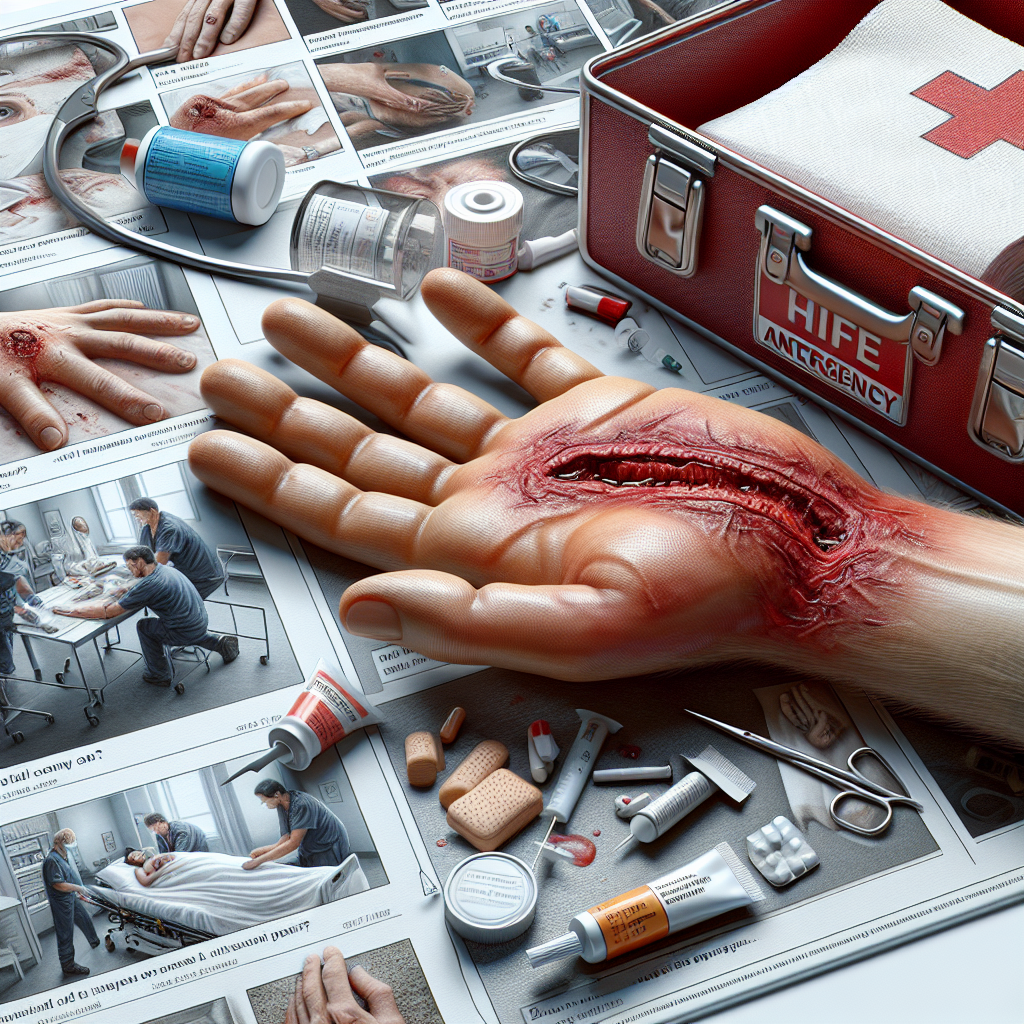Introduction
Imagine slicing your finger while preparing dinner or scraping your knee during a minor accident. Initially, these wounds might seem insignificant, but what happens when they become red, swollen, or even start oozing pus? Is this just a minor inconvenience or a sign of a deeper problem? Determining whether an infected cut is an emergency can be crucial for your health.
- Understanding Infected Cuts
- Signs that Indicate an Emergency
- Steps to Treat an Infected Cut at Home
- When to Seek Urgent Care
- Key Takeaways
- Frequently Asked Questions (FAQs)
- Conclusion
Understanding Infected Cuts
An infected cut can turn a minor injury into a significant health concern. Bacteria such as Staphylococcus aureus and Streptococcus pyogenes can infiltrate even the smallest wounds, transforming them into painful infections. But how can you tell if a cut is infected?
Common Symptoms of an Infected Cut
- Redness and Swelling
- Pain and Tenderness
- Pus or Discharge
- Warmth around the Area
- Fever and Chills
Signs that Indicate an Emergency
While some symptoms of infection can be managed at home, others necessitate immediate medical attention. But how do you differentiate between a minor issue and a full-blown emergency?
When to Rush to the ER
- The infection is spreading rapidly.
- You experience high fever or chills.
- The wound is producing a foul odor.
- There’s excessive swelling or redness around the cut.
- You notice red streaks emanating from the wound.
Sometimes, it can be challenging to decide between visiting an urgent care center or heading directly to the ER. For a detailed guide on making this decision, refer to our article on deciding if you should go to the ER.
Steps to Treat an Infected Cut at Home
If your symptoms are mild, you can attempt some home treatments before seeking professional help. Here are some steps you can take:
1. Clean the Wound Thoroughly
Rinse the cut with clean water and gently scrub around it with soap. Avoid using alcohol or hydrogen peroxide as they can irritate the wound further. For more information on why hydrogen peroxide may not be recommended, check out our post on hydrogen peroxide recommendations.
2. Apply an Antibiotic Ointment
Use over-the-counter antibiotic ointments like Neosporin to prevent bacterial growth. Apply it gently over the cleaned wound.
3. Cover with a Clean Bandage
Keep the wound covered with a sterile bandage to protect it from further contamination. Change the bandage daily and keep an eye on any changes in the wound’s appearance.
4. Monitor and Rest
Keep the affected area elevated if possible and avoid putting pressure on it. Monitor for any signs of worsening infection.
When to Seek Urgent Care
If your symptoms persist despite home treatments or worsen over time, it’s essential to seek professional medical help immediately. Urgent care centers are equipped to handle such situations efficiently. We provide comprehensive minor injury treatment services tailored to your needs.
Pediatric Urgent Care
Children are especially susceptible to infections due to their active lifestyles. If your child has an infected cut and home remedies aren’t working, consider visiting our pediatric urgent care facility for specialized care.
Key Takeaways
- An infected cut can escalate quickly if not treated properly.
- Recognize symptoms like redness, swelling, pus, and warmth.
- Seek immediate medical attention for severe symptoms.
- Home treatments include cleaning the wound and applying antibiotic ointment.
- Visit urgent care if symptoms persist or worsen.
Frequently Asked Questions (FAQs)
What is the first aid for an infected cut?
Clean the wound with water and mild soap, apply antibiotic ointment, and cover it with a sterile bandage. Monitor for any worsening symptoms.
Can I treat an infected cut at home?
Mild infections can often be treated at home with proper cleaning and over-the-counter ointments. However, if symptoms worsen, seek medical attention.
When should I visit the doctor for an infected cut?
Visit a doctor if you experience severe symptoms like spreading redness, high fever, foul odor, or red streaks extending from the wound.
Conclusion
Infections don’t wait; neither should you. Recognizing the signs of an infected cut and knowing when to seek help can make all the difference in your recovery journey. By staying vigilant and taking prompt action, you can ensure that a minor cut doesn’t evolve into a major health concern.
For more information about treating injuries and making informed decisions about your health, explore our extensive resources on urgent care services.
If you’re ever in doubt about the severity of an infection, it’s always better to err on the side of caution. Your health is worth it.




